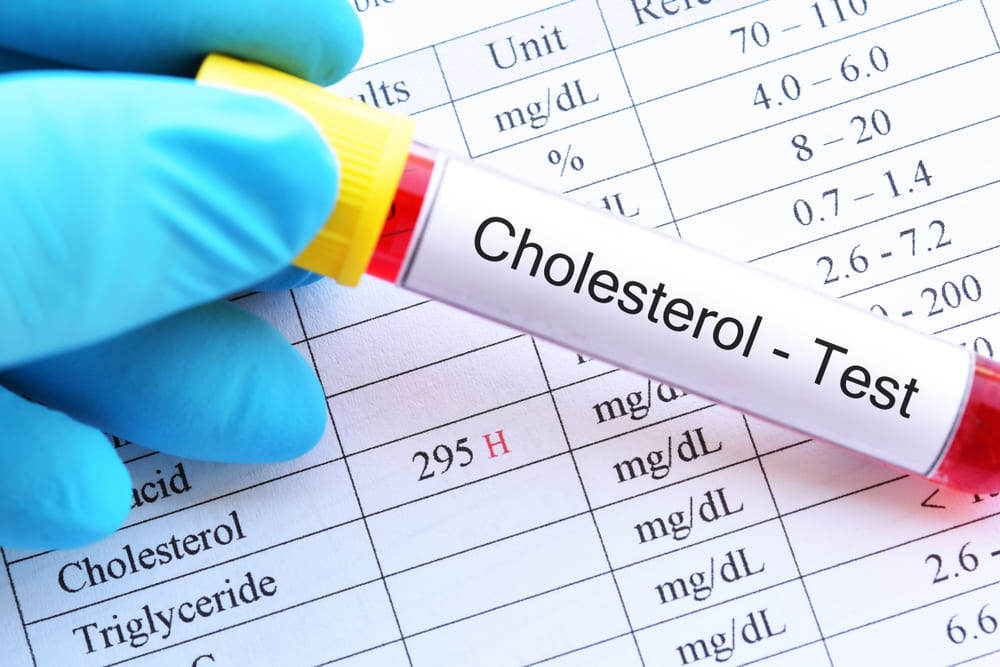


High cholesterol is a silent challenge that many face, acting as a risk factor for cardiovascular diseases. Its hidden nature lies in its ability to thrive unnoticed within our bodies, as it seldom presents any noticeable symptoms until significant harm is done.
This invisible threat highlights the importance of understanding and recognizing the subtle signs and risk factors associated with high cholesterol levels.
Through this blog post, we aim to shed light on these early indicators and give you the knowledge needed to take preemptive steps towards safeguarding your heart health.
By staying informed, you can navigate towards making lifestyle adjustments and decisions. These can contribute to lowering cholesterol and having a healthier heart.
There are six critical pointers that may help stay vigilant.
When we think about high cholesterol, we often consider it an invisible issue because of its general lack of apparent signs. However, in certain rare instances, physical cues may emerge that hint at elevated cholesterol levels.
One of them is the appearance of yellowish patches around the eyelids, known as “Xanthelasma.” While harmless, these patches can be a telltale sign of higher cholesterol than usual. Another less common indicator is a white, arc-like discoloration on the eye’s cornea, often called “corneal arcus.”
It must be understood that these typically manifest in severe cases and might not be present in everyone with high cholesterol. Further, according to Stephen Gill, writing in Medical News Today, if a person has very high cholesterol levels, they may notice they have Xanthelasma or a corneal arcus. However, these signs mainly develop in people who have high cholesterol that runs in families.
A family’s health history can be a window into its members’ health risks, especially regarding cholesterol levels. If a family tree includes relatives with high cholesterol or heart disease, the risk for subsequent generations climbs.
A prime example is familial hypercholesterolemia, a genetic disorder passed down through families. This condition causes consistently high levels of cholesterol from a young age, significantly increasing the risk of heart disease early in life. According to the Centers For Disease Control And Prevention (CDC), “One of the main signs of familial hypercholesterolemia (FH) is LDL cholesterol levels over 190 mg/dL in adults (and over 160 mg/dL in children).”
Knowing your medical ancestry is crucial because it gives you the information needed to get screened early in life and take proactive steps to monitor and manage your cholesterol levels.

Why do we count dietary habits among the early warnings of cholesterol? It’s because our own food choices and eating patterns can be clues to potential cholesterol problems. What is put on the dinner plate without conscious thought (or bought without due attention from the grocery store) can directly and seriously impact cholesterol levels.
Foods high in saturated and trans fats significantly raise cholesterol levels. These fats are often found in processed foods, fried items, fatty meats, and dairy products made with whole milk. Consuming these foods regularly sets the stage for high cholesterol, paving the way for heart disease and stroke.
According to Betsy Lee-Frye, writing in Very Well Health, “It’s important to read the nutrition labels on foods before consuming them. Each food label should include milligrams (mg) of cholesterol per serving. Don’t forget to look at the serving size as well.”
As with dietary habits, thoughtless lifestyle choices can also play a significant role in determining cholesterol levels. Factors such as lack of physical exercise and smoking are not isolated health concerns independent of one another. They can together contribute to the risk of developing high cholesterol.
Engaging in little to no physical activity can slow down your metabolism, making it harder for your body to process fats efficiently, leading to an accumulation of cholesterol. Smoking, too, has a direct adverse effect by damaging blood vessels and making it easier for cholesterol deposits to narrow and harden arteries.
When people realize that poor diet and exercise habits can lead to cholesterol issues, there may be a sudden urge to correct the situation without due medical advice. But, again, alertness is the key. According to the Better Health Channel, “If you are at risk of coronary heart disease and your LDL cholesterol level doesn’t drop after making dietary and lifestyle changes, your doctor may recommend medications to reduce your blood LDL levels. Statins are the most common medication used to lower blood cholesterol.”
The connection between our psychological state and physical health is undeniable, although it often does not get due attention amidst the pace of daily life. Stress and mental health can play a pivotal role in influencing cholesterol levels. Chronic stress not only exacerbates unhealthy lifestyle choices, such as poor diet and inactivity, but it also triggers a physiological response that can directly increase cholesterol production.
The stress hormone cortisol, when released excessively, encourages the liver to produce more cholesterol, potentially elevating levels beyond the norm. This emphasizes the need to manage stress through healthy outlets and by seeking support for mental health issues.
According to Dr. Lisa Matzer, answering a query in Everyday Health, “Stress is known to increase cholesterol levels and in particular the bad LDL cholesterol. The amount of stress in your life isn’t as important as how you deal with it. The more anger and hostility that stress produces in you, the higher (and worse) your LDL and triglyceride levels tend to be. Also, stress may interfere with the body’s ability to clear lipids.”

As experts often tell us, high cholesterol may not occur alone. Quite often, it may come hand-in-hand with other health conditions. The presence of one or more chronic ailments like obesity, cholesterol, diabetes, and hypertension – along with other hereditary factors – can all have a multiplicative impact on the heart.
Monitoring cholesterol becomes even more critical when dealing with all these related conditions. So, by managing your cholesterol you can reduce further complications and contribute to overall heart health. Further, given the interconnected risk factors for cardiovascular diseases, it is crucial to screen for dyslipidemia in individuals diagnosed with hypertension or diabetes, as managing lipid levels can significantly reduce the risk of heart disease and stroke.
Understanding the interconnectedness of cholesterol with several other conditions in the body helps view the body as a network – where one disease can cause another or be the result of another. According to Cleveland Clinic, “High cholesterol is closely linked with many other medical problems. That means it can cause some serious problems to start (like coronary artery disease). But it can also happen as a result of other diseases, especially ones that trigger inflammation in your body (like lupus).”
Cholesterol appears to have very few physical symptoms to signal its presence. But the more important signs to be alert to may reside in our behavior.
Our dietary patterns, physical activity, the lifestyles we live, the ways we stress ourselves, and the habits we pick up to cope with life – these could be very important and early indications of our potential to get (or worsen) cholesterol or its many related diseases. All this, of course, then harms the heart.
Being aware of cholesterol and staying alert to its presence or likelihood – and getting early advice and treatment – is the best way to protect the heart. Stay heart-healthy.